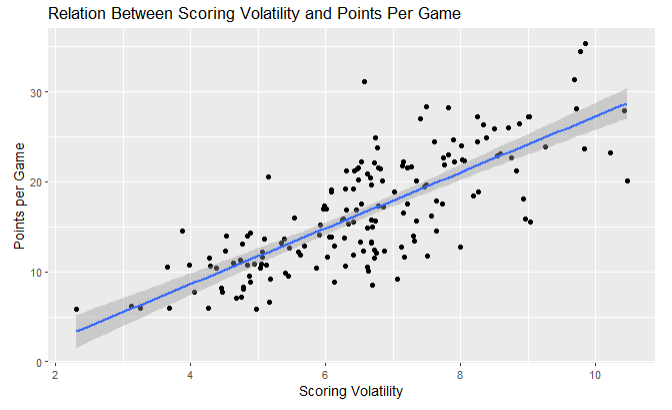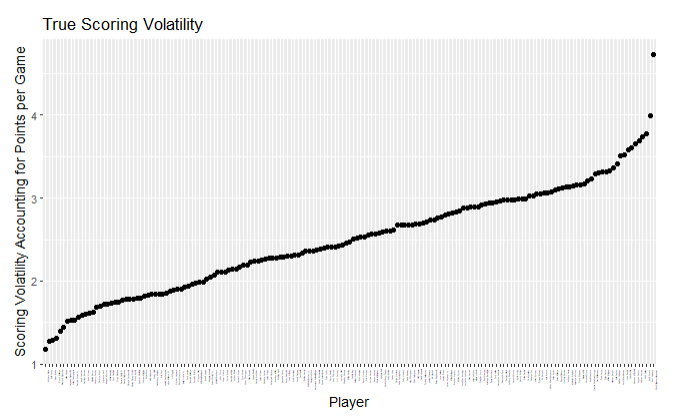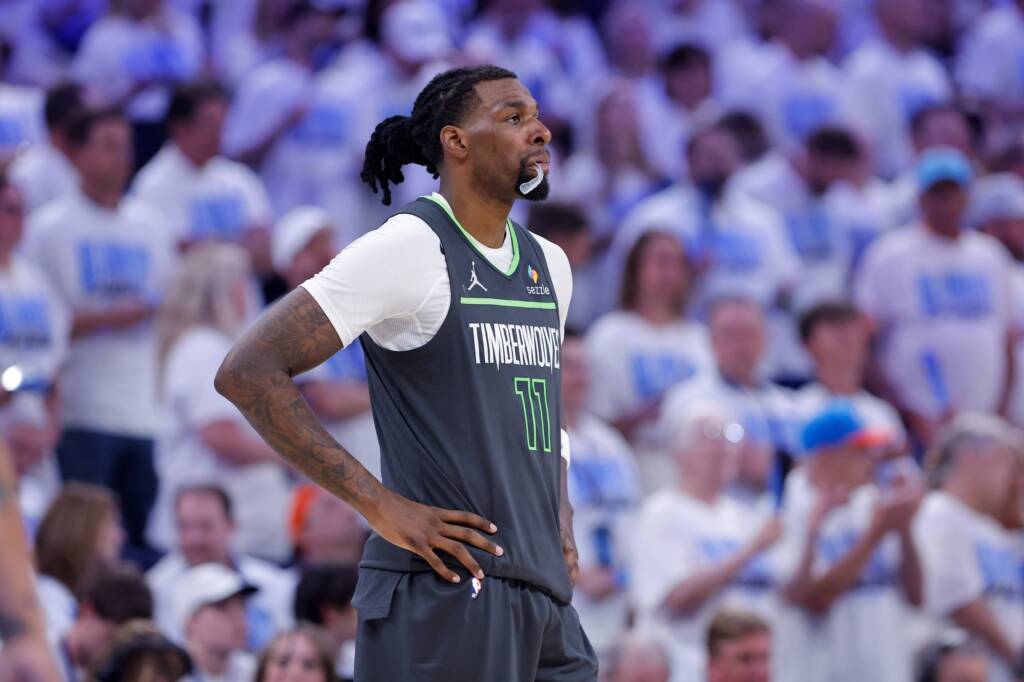Anthony Edwards made the All-Star Game for the second time in his four-year career. There’s no doubt he’s talented, and he’s on track to have a successful career. But how has he matured since being drafted?
Edwards entered the NBA at 19 years old. The Wolves drafted Edwards on Nov. 18, 2020. He debuted on December 23, giving him minimal time to prepare for the jump to professional basketball. He handled the transition well, displaying electric scoring ability with 19.3 points per game as a rookie.
Since then, Edwards has improved his per-game scoring totals each season, shooting more efficiently each season. He gets to the foul line more, makes nearly 40% of his three-point attempts, and has even upped his assist totals. However, he still shows signs of immaturity.
He still forces passes occasionally, like in the Chicago Bulls game:
Edwards pushes the pace despite not having numbers and telegraphs a pass intended for Rudy Gobert. His defender didn’t have to make much of a play to force the turnover.
Sometimes, Edwards takes ill-advised shots. He missed a pass to Naz Reid in the video below. However, he’s proven he can knock down shots like the one he forced over Ayo Dosunmu here:
No player is perfect; mistakes happen. But these are just two examples of many.
According to CleaningTheGlass.com, Edwards turns the ball over on 12.8% of the possessions he’s involved in, good for the 41st percentile among combo guards. Despite his increased assist numbers, the rate at which he racks up assists is low, considering his usage rate. Using CleaningTheGlass again, his 0.72 assist-to-usage ratio is 16th percentile among combo guards.
In other words, Edwards’s main impact on the game is still scoring. Mike Conley, and hopefully Monte Morris, is a true floor general for the Wolves. Edwards doesn’t need to shoulder a heavy playmaking burden for Minnesota to succeed. Instead, he can swing games with elite bucket-getting.
But Edwards’ scoring may have a ways to go.
Edwards has developed an efficient shot, a knack for mid-range jumpers, and a killer instinct. Still, Edwards is one of the least consistent scorers in the NBA. It’s been that way since the Wolves drafted him.
Using data collected from Basketball Reference’s Stathead tool, we can calculate the volatility of scorers using standard deviation. According to the NIH National Library of Medicine, standard deviation is the “measure of how dispersed data is in relation to its mean.”
The sample size below only includes players who start at least 20 games and have played at least 15 minutes in those games. I created these parameters hoping to eliminate games with injuries and avoid players playing sporadic minutes off the bench.
Each game is created equal in this dataset, and although 15 minutes is the minimum requirement, players who play more minutes usually score more. Some bench players make spot starts, creating an artificial inconsistency when, in reality, they had a role change for a handful of games.
Edwards is in the 8th percentile of scoring volatility (calculated as the standard deviation of points scored per game) with an 8.87 figure. His scoring was the 18th least consistent in this dataset, behind D’Angelo Russell’s 8.95 and ahead of Terry Rozier’s 8.83.
Zach LaVine had the least tightest distribution of points per game, with a value of 10.47. Kevon Looney was the most consistent at 2.29.
As you can see, Edwards’ 8.87 number is quite high.
It appears Edwards is incredibly inconsistent, perhaps to the extent that it hurts his team. But there’s a caveat.
Scoring volatility and points per game are strongly correlated. Putting up between 10 and 15 points in any game is far easier than scoring 25 and 30. Therefore, we must account for the player’s scoring average. Dividing the player’s points per game by the standard deviation of their scoring totals will help paint a clearer picture of who is truly the best and most consistent scorer.
The first graph below shows the relation between points per game and scoring volatility. The second shows every player in the dataset ordered by “True Scoring Volatility”:
Perhaps unsurprisingly, Shai Gilgeous-Alexander is now the most consistent scorer in the NBA with a “True Scoring Volatility” of 4.73. Anthony Black is the least at 1.17. These numbers are difficult to contextualize, but they measure scoring volatility weighted by the volume they score.
Using this stat, Edwards becomes a far more consistent scorer. Rather than being 8th percentile, he’s jumped up to the 71st percentile with a 2.98 figure. Once again, there’s a caveat.
Stephen Curry and Devin Booker are the only players behind Edwards in “True Scoring Volatility” who score more points per game than him.
Edwards is a fairly consistent scorer when factoring in the volume of points he scores, but he’s among the least consistent of the top scorers in the NBA.
The players ahead of him in “True Scoring Volatility” are often higher volume free throw shooters than Edwards. Guards like Gilgeous-Alexander, Trae Young, and Luka Dončić all supplement their scoring with free throws, allowing them to be more consistent scorers than Edwards.
The relation between free throw attempts and “True Scoring Volatility” is strong, with an R-squared value of 0.513. As players attempt more free throws per game, they become more consistent scorers:
It’s unclear whether “True Scoring Volatility” affects a team’s winning percentage. Several offensive efficiency stats, like the aptly named Offensive Efficiency (OE) Stephen M. Shea and Christopher E. Baker created, have shown that efficient, high-volume scoring from a team’s top player naturally leads to more wins.
Regardless of whether it helps win games, getting to the line more is an obvious next step in Edwards’ game. Given that Edwards is already a talented shooter and defender, drawing more fouls as the next step was almost out of a lack of options. Now, it appears it could help him impact every game, every night.
As seen above, he’s made marginal gains in “True Scoring Volatility” as his career has progressed. Future analysis will show whether or not continuing those improvements will help the Wolves and how much.






